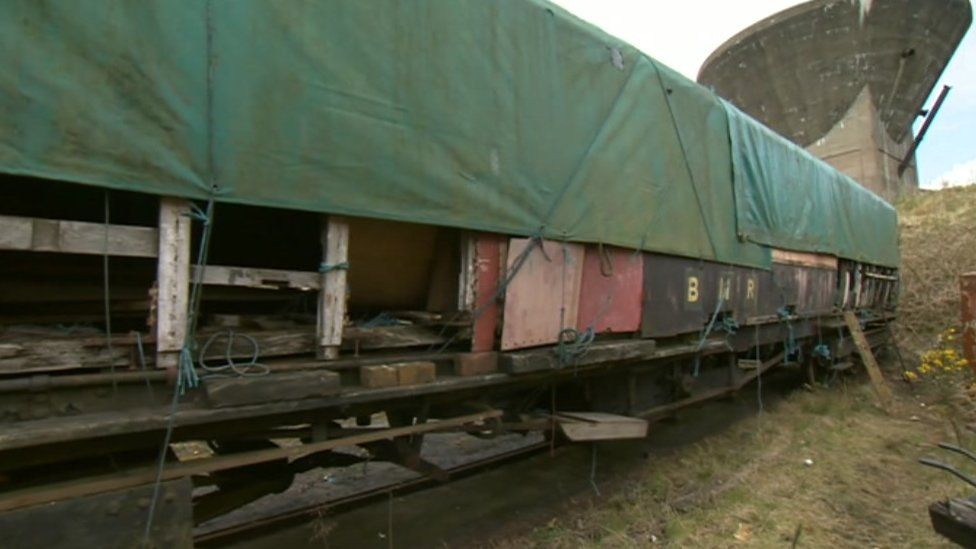Titanic-linked train carriages discovered in yard
- Published

Titanic historians have discovered two train carriages they believe took passengers to the ship ahead of its infamous maiden journey.
Members of the British Titanic Society think the wooden carriages, found in a yard in South Wales, formed part of a train that carried passengers from London to Southampton on 10 April 1912.
Five days later the Southampton-based liner sank in the North Atlantic Ocean.
It is hoped the carriages, which are due to be scrapped, can be restored.
The carriages, which were newly built for the London and South Western Railway at Eastleigh Works, are in a dilapidated state and have been sitting in a yard in Blaenavon for 30 years.
The British Titanic Society said there was a "strong possibility" they were linked to the White Star liner.
David Scott-Beddard, from the society, said: "The important thing is the possible direct connection to taking the passengers to Titanic and possibly taking a lot of those passengers to their death."
It comes years after the same team rescued a wreck, called Nomadic, which was built to ferry passengers on and off Titanic at Cherbourg.
The Nomadic is now on display at the Titanic Quarter in Belfast.
The British Titanic Society hopes it can restore the carriages and put them on display after their owner was told they must be moved or face them being scrapped.
Owner Charles James, who does not own the land on which the carriages are stored, said: "We were told if they were still here after the 30 June they would be seized and burnt, and cut up.
"I care about these things, and [have] owned them about 30 years now, but all we've been able to do is keep the wet out of them and stop things getting any worse."
Mr Scott-Beddard added: "They're a part of Southampton's history and an important part of maritime history."
More than 540 people from the city perished after the ship struck an iceberg on its maiden journey from Southampton to New York and sank.
In total, more than 1,500 lives were lost.
Follow BBC South on Facebook, Twitter, or Instagram. Send your story ideas to [email protected].
- Published16 April 2021
- Published15 April 2012
- Published10 April 2012
- Published10 April 2012
- Published10 April 2012